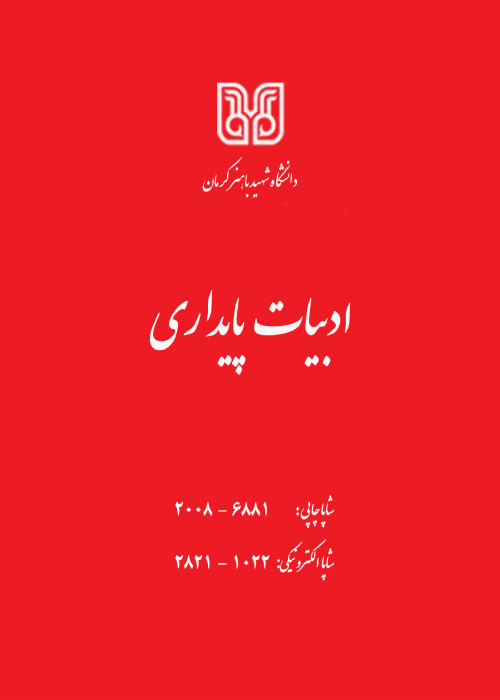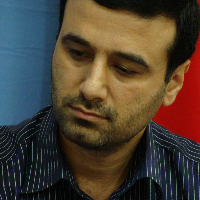Examining the elements and details of context in the memory collection of 'The Foot That Remained'
Introduction :
Context is a set of elements and details of field, place and time that determines the conditions for the production and reproduction of meaning in a literary work. The analysis of the effects of resistance memoirs with linguistic and metalanguage features involved in creating meaning indicates the quality of the reciprocal relationship between language and discourse, as well as the relationship between narrative characters. The study of how meaning is transmitted as knowledge in cognitive linguistics has been considered as contextualism. Contextualism is a part of cognitive linguistics in contrast with reproductive linguistics, and is influenced by the hypotheses of Edward Sapir and his colleague Benjamin Li Wurf about linguistic relativity (linguistic relativity hypothesis) based on cultural diversity, and is also influenced by cognitive psychology, with a similar approach to the functional approach (see: kamri, 2011, 42).In the last five decades, functional and semantic linguists have identified a set of details and elements in organized texts that include context, subject, situation, time, and place. They call this set of details and elements context. In fact, 'context' is a set of conditions, in which the text and paratext have been produced.
In this paper, with a descriptive analytical method, we have tried to examine the most important linguistic and metalinguistic (paralinguistic) factors in the function of multiple layers of elements and context details in creating and reproducing meaning in the memoir The Foot That Remained. The purpose of this study is to show the quality, unity or dispersion of the meaning of the work at the time of occurrence, production and reproduction of events from a linguistic-cognitive perspective.
The new critique has received the terms 'context' and "context analysis" from cognitive and functional linguistics, in the last two decades. Morkeriger (1956) first used it in the sense of the aesthetic experience of the literary work as a completely complex, self-reliant and unique world (Ghasem nejad, 1997, 192). This approach found a prominent place in poetry and the separation of poetry from prose, so that phonetic ideas, order of images, the effect of vowels and consonants in the verbal context and meanings are induced, and textual references refer to the non-verbal context of poetry. (Volk, 2004, 500).One of the most important reasons for paying attention to context in literary works is the distinguishing feature of literary language from everyday language. In fact, "words are motionless in the context of everyday language and cannot transcend our perception of things, but art seeks to convey the sense of things as they are perceived; not as they are known” (Bertens, 2008, 45). In fact, discourse and anthropological studies can be achieved from within the context of a work, because language communicates fluidly and dynamically between itself and the context to create text in accoradance with the linguistic context and the properties of that context. Because the text does not only have a meaning and is not just a means of transmitting meaning (Mohajer& Nabavi, 1997, 27).The study of interpersonal, sociological, and historical elements in the West is an interdisciplinary approach that has developed since the second decade of the nineteenth century. In the Islamic world, the debate over how to create the interaction of words for communication has been of particular importance too.Context works as a dynamic element in relation to antecedent and precedent elements to produce meaning. The set of context-building elements, including verbal, cultural, and referential background, is placed in an environment called the context (Fowler, 2016, 155).
By studying the context of The foot That Remained collection of memories, it became clear that the study of meaning in the text is related to recognizing the quality of the elements that make up the text. This connection is a good way to better understand the literary capacities of a work. By identifying the linguistic and situational context of the collection, the way meaning in the two parts of the war and captivity was produced and reproduced was shown. Hosseinipour has brought the intertwined elements of context in interaction with each other to an end of suspending meaning at the time of text production. In this work, the author, using his linguistic creativity, while using linguistic context, has also used situational contexts in the appropriate setting. By creating an atmosphere created by the linguistic and situational context of the work, he created a kind of framing so that the reader would be in the position of narration along with him, and in this way, his understanding of meaning would be more accurate.By using cultural and situational context, Hosseinipour has considered concrete elements outside the text in his narrative. This method allows the linguistic context to show a new understanding of the world around the front and the narrator during captivity, in communication with and accompany of the elements before and after it. In some cases, he uses linguistic knowledge to move some grammatical elements against the rules of language to help highlight a certain part of the text. Part of the linguistic and external references of this work include codes and signs of concrete subjects and refers to matters that are out of the immediate context of speech in time and place. One of the most central concrete issues in the situational contexts of this work is manifested in the dual confrontations of good and evil. In some cases, this confrontation is manifested in the form of verbal satire and in others in the form of myth. The narrator creates a situation that brings the narrative closer to reality by going back and forth between the sub-narrative of the signifier in the socio-cultural context, as well as explaining its position and interactions with it.
- حق عضویت دریافتی صرف حمایت از نشریات عضو و نگهداری، تکمیل و توسعه مگیران میشود.
- پرداخت حق اشتراک و دانلود مقالات اجازه بازنشر آن در سایر رسانههای چاپی و دیجیتال را به کاربر نمیدهد.



